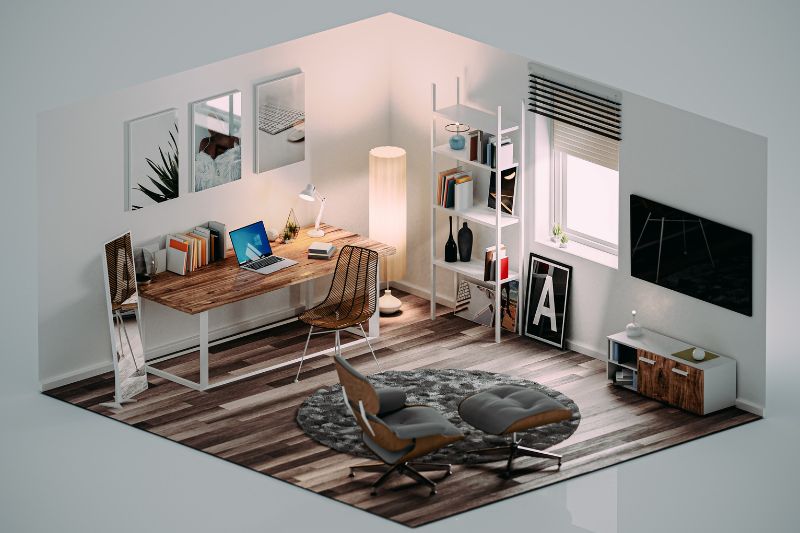6 Things That Can Help You When Designing Very Detailed Items

Designing detailed items requires a lot of precision and an eye for detail. It can be difficult to create intricate designs without the right tools or software. Fortunately, there are a number of helpful products available that make complex design tasks much easier.
In this article, we will explore six things that can help you when designing very detailed items. From specialized software to helpful tutorials, these tools can help you make accurate and beautiful designs with ease. Keep reading to find out more about how technology can help you create detailed items.
1. Design Software
Since the advent of computers, countless software programs have been created to aid in design endeavors. Some are more suited for designing intricate and detailed items than others. CAD (Computer-Aided Design) programs such as AutoCAD and Solidworks allow users to create precise models and prototypes by combining 2D sketches with 3D shapes and components. Also, a render farm can be used to generate realistic 3D images of a given design. Other software, such as Adobe Photoshop and Illustrator, provides tools for vector graphics and digital imaging.
These programs allow users to create sophisticated logos, illustrations, and other artwork with great precision. In addition, some software is specifically designed for product design and engineering.
2. 3D Printing Technology
When it comes to designing very detailed items, 3D printing technology has become a go-to for many designers. This advanced process allows even the most intricate objects to be printed in a matter of hours or days. The key advantage is that it eliminates the need for traditional manufacturing techniques and instead relies on digital input from computer software and can produce any type of 3D object imaginable.
3D printing also offers a high level of customization, as objects can be designed and printed to specific sizes, shapes, and textures. It’s also eco-friendly since it doesn’t produce any waste or poisonous fumes, which makes it a much more sustainable choice than traditional methods.
3. Research and Reference Materials
One of the most important tools to consider when designing detailed items is having access to comprehensive research and reference materials. Such materials give designers the information they need to create accurate designs. They also provide a way for designers to compare different design elements and make changes accordingly.
For example, if a designer wants to incorporate a certain type of element into their design but isn’t sure how to go about it, reference materials can help guide them in the right direction. Examples of research and reference materials include books, articles, blogs, magazines, and websites.
4. Color Theory Knowledge
There are various software programs that come with color theory knowledge to help you create beautiful, eye-catching designs. It will also inform your design decisions by providing information about how colors interact and what works best together. Look for features such as the ability to adjust the hue, saturation, and brightness of any color or even more advanced stuff like a color wheel that lets you create color harmonies.
Also, many software will come with built-in color palettes that already contain well-defined combinations of colors to help you get started. With this knowledge, you can make sure your designs are as aesthetically pleasing and balanced as possible.
5. Graphic Design Principles
Of course, the design patterns and principles that govern the look and feel of any design are key elements in the successful creation of detailed items. All graphic designs should adhere to basic design principles such as balance, harmony, contrast, dominance, unity, scale, and proportion. Practicing these fundamentals will help you create more cohesive compositions.
Plus, understanding how light interacts with objects can help you create realistic-looking renderings. Knowing the basics of color theory can also provide guidance in selecting colors that complement each other and bring out the best qualities of your design. Finally, looking at examples of work from leading designers in the industry may inspire you to try different approaches and explore new ideas.
6. Image Editing Programs
Lastly, image editing programs are an invaluable tool for designing detailed items. From the basics of resizing and cropping images to more advanced photo manipulation techniques, these programs allow users to quickly edit photos without needing a professional photographer or image editor. Popular image editing programs include Adobe Photoshop, GIMP, and PaintShop Pro.
Software designed for 3D modeling and printing can help people to take their designs to the next level, creating detailed items with precise measurements. This type of software offers a number of features that make it easier than ever before to create intricate designs, including the ability to precisely adjust measurements and angles and add complex details such as curves and texturing. Thanks for reading!











Leave a Reply